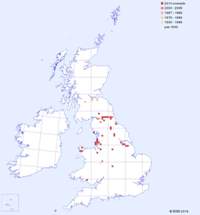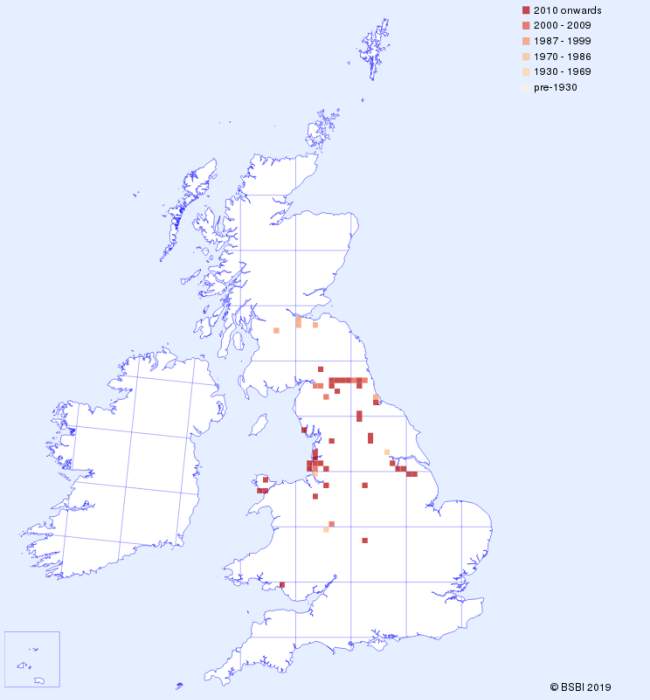The condemnation of Epipactis dunensis as a boring plant with drab flowers is quite unjustified: in sheltered spots this orchid can grow up to a metre tall. Our understanding of the distribution of this species is evolving, as more colonies of what was once considered to be almost exclusively a coastal plant are discovered inland. Confusion with other species, in particular Epipactis helleborine and the distinct variety Tyne Helleborine (no formal name), further confuse the picture. Dune Helleborine is best known from the slightly raised edges of dune slacks, where it grows up through willow scrub and presents a somewhat scruffy picture. It is a rather sickly pale yellowish-green plant that is much shorter in wind-whipped sand-dune systems. Tyne Helleborine, which grows inland in woodland clearings in Cumbria, other northern counties and southern Scotland, is an altogether 'fresher' and brighter green. Dune Helleborine flowers between late June and mid August, and its flowers can take a frustratingly long time to fully open - some do not. Once open, the flowering period is very short, making this orchid a difficult candidate for getting photographs of plants in peak condition. The Dune Helleborine is endemic to Britain.
| Distribution Map | Key Features | |
 |
Records for the Dune Helleborine from BSBI are shown on the map with most recent in front. (Hover the mouse over the small map to expand it.) |
Plant (typical specimen): 20 to 50cm tall, occasionally to 100cm; stem pale green flushed purple towards the base, covered in fine hairs towards the top. |
Image Gallery for Dune Helleborine Epipactis dunensis
| Pollination | Taxonomy & Hybrids |
Mainly self pollinated, but when the flowers do open sufficiently insect pollination is possible. |
The specific name dunensis means 'of dunes'. |
Articles about Dune Helleborine in JHOS
